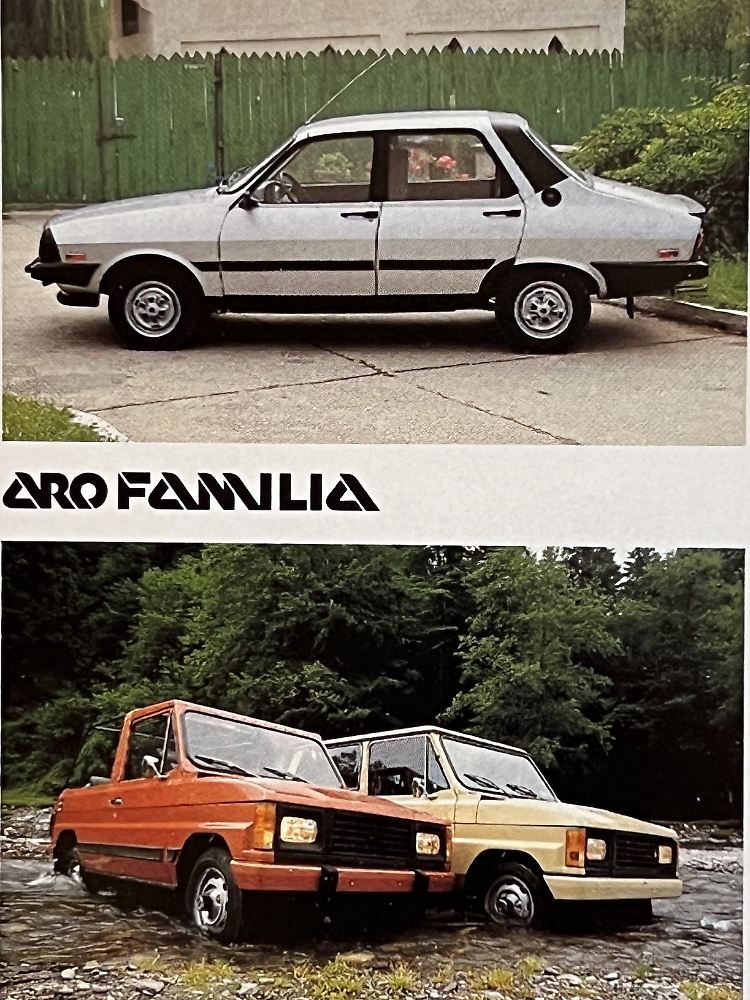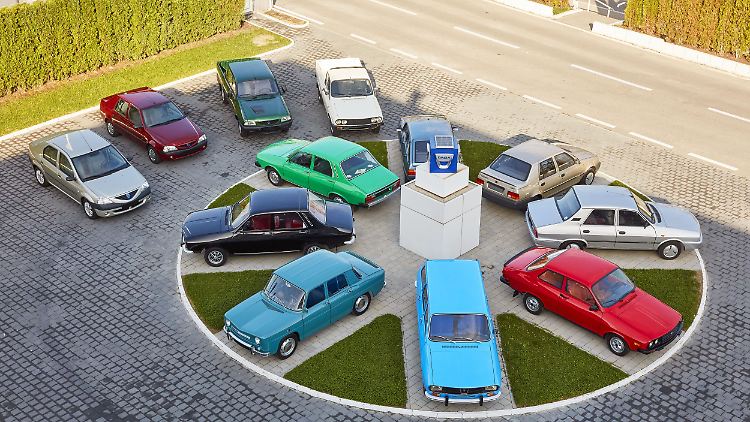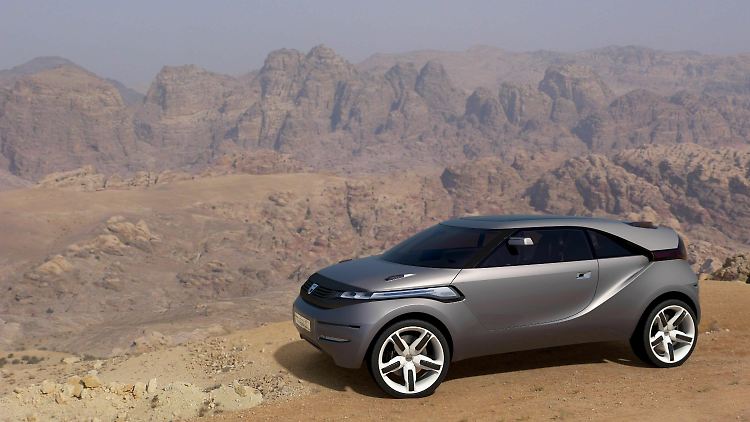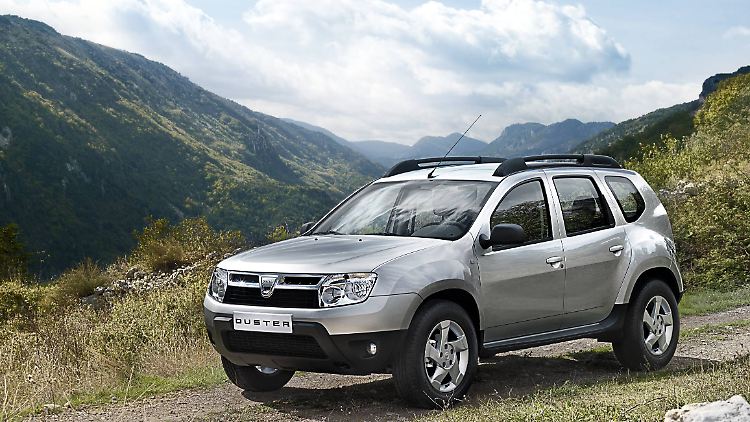It is an almost unique success story in the automotive world: The Duster makes Dacia so popular that in 2023 the brand will sell more cars in Germany than its parent company Renault for the first time. However, the Romanians came up with the idea for the success story as early as 1984.
Is a Dacia better than a Renault? In fact, the masses worldwide are crazy about the models of the Romanian budget manufacturer Dacia; in Germany, the low-budget subsidiary of the traditional French company Renault even surpassed its parent company's sales figures for the first time in 2023. Dacia models score points especially with private customers with their price advantage – but also with the coolness factor of the SUV, with which the Duster has already surprised twice.


Rustic and cheap start – Dacia Aro Duster or Type 10 all-wheel drive from 1984.
(Photo: Dacia Aro)
The Duster made headlines for the first time 40 years ago – as an all-wheel drive vehicle from the Romanian off-road specialist Aro. In the still small all-wheel drive community, the cleverly designed Aro models enjoyed cult status. However, the rustic build quality ultimately hampered the success of the off-road crossovers on export markets, just as Dacia had experienced with licensed Renault derivatives since 1968. Nevertheless, a sales cooperation was formed between Aro and Dacia, and from 1984 onwards the Aro Type 10, marketed as the Dacia Duster, caused as much of a stir, especially in Britain, as the legendary TV music show “Top of the Pops”.
“The biggest value on earth comes to town,” promised the advertising for the Duster, and indeed no four-wheel drive vehicle was cheaper – until Suzuki countered. Dacia showed how it could be done better in 2009 – now as a Renault subsidiary. The new Duster took off, first as a daring concept car, then as a solid budget SUV that sold millions of units. Many tried to copy the Dacia philosophy, but the Duster remains ahead, now in its fourth edition.
Affordable alternative
Cheaper than all competitors (but there are no discounts), dressed in practical and trendy outdoor couture, optional 4×4 drive that turns the desert into your living room, and better rankings in breakdown statistics than some Japanese: The car manufacturer from Pitesti on the edge of the Carpathians knows from experience why many customers find the Duster cooler than other cheap cars. They had to pay the price for this at Dacia.


The Romanian brand Dacia grew up with Renault models built under license from 1968 onwards.
(Photo: Dacia Renault Group)
The Dacia Aro all-wheel drive vehicles from the 1980s already tried to impress as stylish leisure and family vehicles, which is why they were advertised in Germany as an “alternative among the classic off-road vehicles”. Competitors such as the Daihatsu Wildcat were 50 percent more expensive, but on the other hand the small Suzuki off-road vehicles were just as inexpensive as the Dacia Aro all-wheel drive vehicles, which were on show in Germany side by side with the Dacia 1310 (license-built Renault 12).
Early association with Renault
The end of the early Dacia Duster and other Aros did not come about as a result of the Romanian revolution, which in 1990/91 brought about fundamental political and economic changes in the automobile industry.
Rather, it was the superiority of the competition through higher quality products that forced Aro and Dacia to look for new partners. Dacia had launched the first million-seller in this Eastern European country with its 1300 saloons and station wagons. This sensational success story was made possible by a cooperation with Renault in 1966. It is no wonder that Dacia renewed its friendship with the French in 1999.
Since then, Dacia has been part of the Renault Group, and the French have succeeded where others have failed: building decent, ultra-cheap cars that can still make money.
After the transition model Dacia Solenza had raised the quality standards in Pitesti to Western European levels in 2003, the Dacia Logan/MCV amazed everyone as the world's cheapest five- to seven-seater. Not to mention confidence-building measures such as generous warranty packages: three years, which no other budget brand offered at the time.
Springboard to success
However, Dacia only managed to become a charismatic brand with the reinvention of the Duster. This story began in 2009 with a futuristic-looking Duster concept car that rocked the Geneva Motor Show – and presented itself as a crowd favorite among supercars from Ferrari and Koenigsegg.


Too bold for series production: the Dacia Duster concept car from 2009.
(Photo: Dacia Renault Group)
Two doors on the passenger side that open in opposite directions – this has never been seen on a production vehicle before. At just 4.25 meters long, the Duster show car showed a lot of creativity, but perhaps the biggest surprise was that the production version unveiled at the end of 2009 was designed completely differently. And yet this first Duster to be built in series was also groundbreaking.
The 4.32 meter long and 1.68 meter high series Duster was what the British call the “Defining Car”, because in 2010 the sensationally inexpensive Dacia replicated what the Range Rover had previously shown at the other end, in the luxury class of off-road cruisers. The Romanian redefined the compact SUV segment, making the spacious high seats with off-road talents accessible to young families and buyers with a low income.
From family friend to cool guy
The SUV, which goes against the grain of “the bigger and more expensive, the better”, was a real hit even in the most demanding European market: in Germany, the Duster immediately secured pole position in its segment. No wonder, since the Dacia cost over 50 percent less than a comparable Skoda Yeti or Suzuki Grand Vitara.


At the end of the successful year of 2009 with over 85,000 Dacia registrations in Germany alone, the Duster debuts as the cheapest SUV in its class.
(Photo: Dacia Renault Group)
Above all: With more than 2.6 million vehicles sold by the end of 2018, 1.5 million of which were under the Dacia brand, the Duster became a global shooting star. If you're wondering: Since the Renault brand is better known worldwide, the Duster is still sold in many countries with the Renault logo.
Everyday hero, family friend and leisure vehicle with optional 4×4 technology, this role was filled by “Germany's cheapest SUV” (advertising slogan) straight away. What followed was the rocky road to becoming a cool guy: The foundation for this was laid in 2012 by the Dacia “No Limit”, which took third place in the infamous Pikes Peak Hill Climb with a 3.8-liter V6 from the Nissan GT-R “Godzilla”.
Then it was up to football star Mehmet Scholl to make the Romanian “status symbol for everyone who doesn't need status symbols” more attractive as a brand ambassador. And indeed: Almost like in the TV adverts, a few Dusters were parked in front of golf courses (or at the opera) between prestige SUVs. The Duster also gained respect at rallies and in use by aid and rescue services.
Pope Francis’s popemobile was a Duster


The Bigster Concept is a forerunner of the 4.60-meter SUV announced for fall 2024.
(Photo: Imago)
In 2017, the new Duster made its debut at the International Motor Show in Frankfurt am Main in a new edition with more comfort – and later even convinced the Holy See in Rome: Pope Francis was now driving a Dacia. Sharpened design and new drives (cheap LPG and efficient hybrid technology, but no full electrification) made the renewed Duster a model for private customers who did not want to go along with the sometimes inflationary price jumps of volume brands like Volkswagen.
Similar to the discounters Aldi and Lidl, Dacia shows that cheap can also be good. The Romanians are staying true to this course with the new, fourth Duster edition. To ensure that Dacia remains the SUV brand of the hour for smart shoppers, the larger Bigster is expected to make the Duster's recipe a success against the VW Tiguan & Co at the end of 2024.































